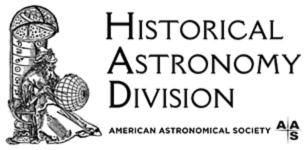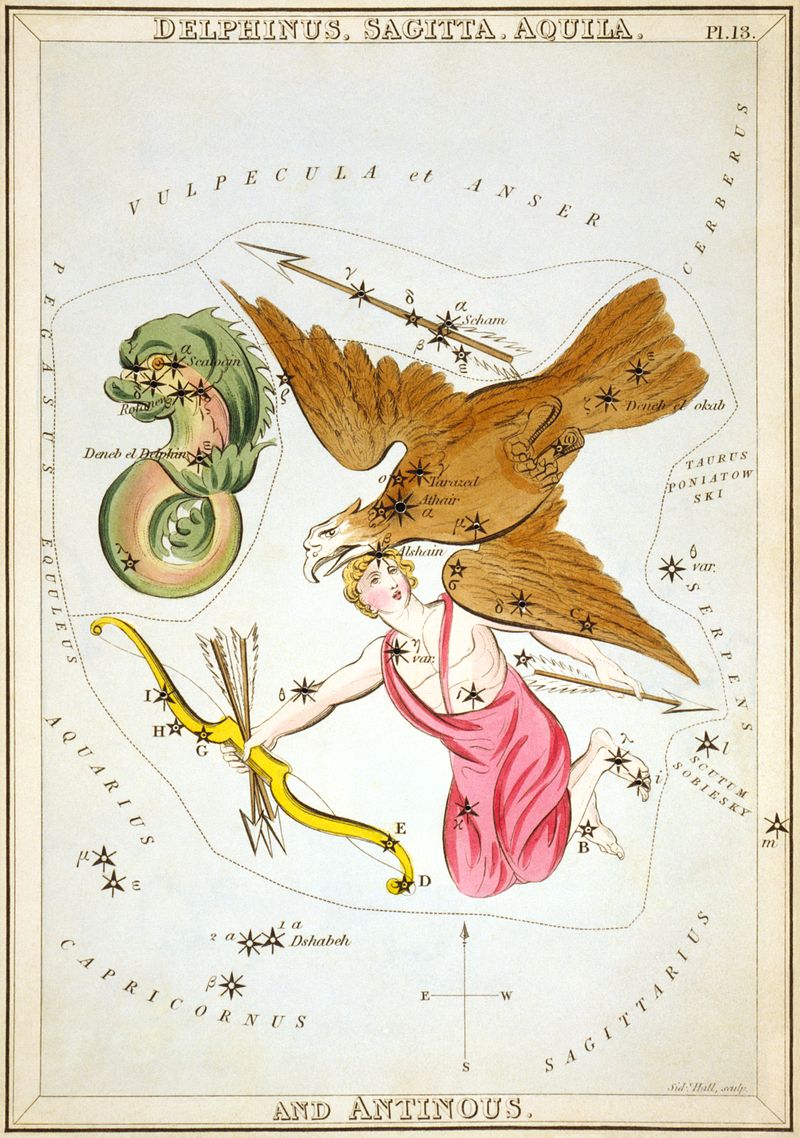This Month in Astronomical History: December
Linda French Illinois Wesleyan Univeristy
 Each month as part of this series from the AAS Historical Astronomy Division, an important discovery or memorable event in the history of astronomy will be highlighted. This Month's (December 2018) guest author Linda French (National Science Foundation) focuses on the discovery of the variable star called Eta Antinoi.
Each month as part of this series from the AAS Historical Astronomy Division, an important discovery or memorable event in the history of astronomy will be highlighted. This Month's (December 2018) guest author Linda French (National Science Foundation) focuses on the discovery of the variable star called Eta Antinoi.
The First Cepheid Variable Discovered Was, Of Course…Eta Aquilae?

On 23 December 1784, Sir Henry Englefield read a letter from Edward Pigott of York, England to the Royal Society of London, announcing the discovery of a new variable star called Eta Antinoi. The star was then part of a constellation called Antinous, which contained stars south of Aquila not previously included in any constellation. Today, Antinous has been added to the list of “obsolete constellations”1 and its stars integrated into Aquila. Since late in the 19th century the star has been known as Eta Aquilae.
Pigott and his protegé, John Goodricke, had begun a search for variables in 1782. Fresh from their success determining the period of Algol2,3, for which Goodricke received the Royal Society’s Copley Medal in 1783, the pair carried on with their program. The autumn of 1784 proved particularly fruitful. On 10 September, Pigott asked Goodricke to observe Eta Antinoi, which Pigott suspected to vary. A few weeks of observing confirmed that Eta varied between magnitude 3.5 and 4.3. In October, Goodricke requested that Pigott observe Delta Cephei. Pigott’s paper was published in the Philosophical Transactions of the Royal Society in January 17854. Goodricke’s paper on Delta Cephei was read on 24 November 1785 and published in January 17865.
If Eta Antinoi was the first Cepheid discovered, why are these stars called “Cepheids”? Was there an identity crisis because of the change in its constellation? The constellation of Antinous was created in the time of the Emperor Hadrian (~130 CE) to honor his young lover. The boy died under suspicious circumstances leaving Hadrian heartbroken. He declared Antinous a god and asked that a constellation commemorate him. It is not clear who created the constellation (possibly Ptolemy himself)1, but it remained on the 19th-century star charts of Argelander (1843)8 and Heis (1872)9. However, by the time of Edward Pickering's pioneering work in classifying variable stars10, and the spectroscopic work of Belopolsky6,7, the name Eta Aquilae was widely used in astronomical journals.
A more subtle question is "Who coined the term ‘Cepheid’”? The answer appears to be the much under-appreciated Agnes Mary Clerke, who in her last book Problems in Astrophysics wrote “Stars fluctuating in short periods may be separated into…families. The first has d Cephei… for its head, and their members may conveniently be designated Cepheid … variables.”11
These stars, by whatever name, are among the most fascinating and useful in the sky. Edward Pigott gave the astronomical community a valuable holiday present in December 1784, more than a century before their significance could be fully understood. It is perhaps fitting that even the nomenclature of Cepheids has a complex history.
Figures
Fig. 1. [Portrait of John Goodricke] This portrait of John Goodricke was made in 1785, when Goodricke was 20. Unfortunately, no verified portrait of Edward Pigott exists. Image credit: Royal Astronomical Society.
Fig. 2. [Eta Aquilae Light Curve]: Adapted from Bersier, D. 2002. ApJ Supp 140, 465-468.

Fig. 3. Bode, J. 1801. Uranographia.

Fig. 4. Hall, S. 1824. Urania's mirror.

References
1) Ridpath, Ian. (n.d.), Ian Ridpath's Star Tales, Chapter Four, "Obsolete Constellations." Available at http://www.ianridpath.com/startales/startales4.htm
2) Hoskin, M. 1982. “Goodricke, Pigott, and the Quest for Variable Stars,” in Stellar Astronomy, Science History Publications Ltd., Chalfont St. Giles, England.
3) French, L. M. 2012. John Goodricke, Edward Pigott, and Their Study of Variable Stars. Journal of the American Association of Variable Star Observers (JAAVSO), 40, 120.
4) Pigott, Edward. 1785. Philosophical Transactions of the Royal Society of London 75, 127-136. Observations of a New Variable Star. Available at http://rstl.royalsocietypublishing.org/content/75/127
5) Goodricke, John. 1786. Phil. Trans. 76, 48-61. A Series of Observations on, and a Discovery of, the Period of the Variation of the Light of the Star Marked δ by Bayer, Near the Head of Cepheus. Available at http://rstl.royalsocietypublishing.org/content/76/48
6) Belopolsky,A. 1895. ApJ 1, 160-161. The Spectrum of d Cephei.
7) Belopolsky,A. 1897. ApJ 6, 393-399. Researches on the Spectrum of the Variable Star Eta Aquilae.
8) Argelander, F. 1843. Uranometria Nova. Available at http://lhldigital.lindahall.org/cdm/ref/collection/astro_atlas/id/1355 accessed 11/2/2018.
9) Heis, E. 1872. Atlas Coelestis Novus. Available at http://www.aai.ee/muuseum/Uranomeetria/Pictures/Screen/Heis_S_011.jpg
10) Pickering, E. 1880. Variable Stars of Short Period. Proc. Amer. Acad. Arts and Sciences 16 257-284.
11) Clerke, Agnes Mary. 1903. Problems in Astrophysics. London, A&C Black. Available at https://babel.hathitrust.org/cgi/pt?id=nyp.33433069087934;view=1up;seq=373 accessed 10/27/18.

